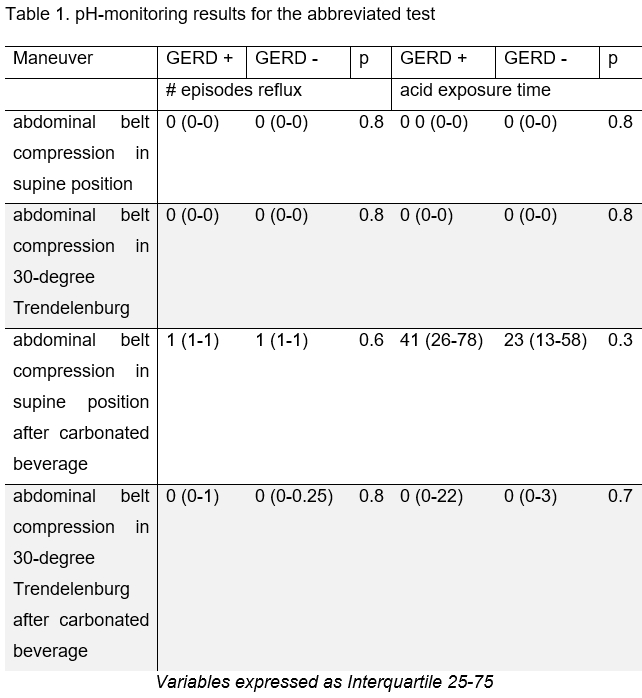Back to 2024 Abstracts
OBJECTIVE DIAGNOSIS OF GASTRO-ESOPHAGEAL REFLUX DISEASE BY ABBREVIATED PH MONITORING WITH PROVOCATIVE TESTS COMPARED TO PROLONGED CONVENTIONAL PH MONITORING
Rogério Mariotto
*1, Fernando A. Herbella
1, Rafael M. Laurino Neto
1, Marco G. Patti
21gastrocirurgia, Universidade Federal de Sao Paulo, Sao Paulo, Brazil; 2University of Virginia, Charlottesville, VA
Introduction: Gastroesophageal reflux disease (GERD) diagnosis demands objective testing since symptoms are unreliable. Esophageal function tests; however, are invasive and tolerance to uncomfortable tests is decreasing. Provocative tests may lead to GERD and abbreviate the need for prolonged monitoring. Abbreviated pHmonitoring may not provide complete information such as symptomatic correlation and reflux pattern, but it may be an alternative for patients refusing to undergo 24hs monitoring. This study aims to compare abbreviated pH-monitoring with provocative tests and prolonged conventional pH-monitoring.
Method: We studied 32 patients with clinical diagnosis of GERD (50% males, median age 50 years). All individuals underwent esophageal manometry and ambulatory pHmonitoring. After pH-monitoring catheter placement, individuals underwent sequential provocative maneuvers (abbreviated test): (1) abdominal belt compression in supine position for 5 minutes; (2) abdominal belt compression in 30-degree Trendelenburg position for 5 minutes; (3) ingestion of 350ml of carbonated beverage (coke); (4) repetition of abdominal belt compression in supine position for 5 minutes; (5) repetition of abdominal belt compression in 30-degree Trendelenburg position for 5 minutes. After the abbreviated test, patients completed the 24hs conventional test. Patients were grouped as GERD + or GERD – based on DeMeester score of the complete test excluding the abbreviated period. The number of episodes of reflux and acid exposure time were calculated for each period.
Results: 62% patients were GERD + and 38% were GERD-. pH-monitoring results for the abbreviated test are shown in table 1. There were no differences comparing GERD + and GERD – individuals. The correlation of acid exposure for each provocative maneuver and manometric parameters for the whole population is expressed in table 2. Lower esophageal sphincter length correlates inversely with acid exposure time after carbonated beverage.
Conclusion: Abbreviated pH-monitoring with provocative tests does not discriminate GERD. Prolonged 24hs ambulatory pH-monitoring remains the gold standard for GERD diagnosis. Provocative maneuvers aimed at increasing abdominal pressure results in higher acid exposure time in patients with shorter lower esophageal sphincter irrespective of GERD presence.


Back to 2024 Abstracts

